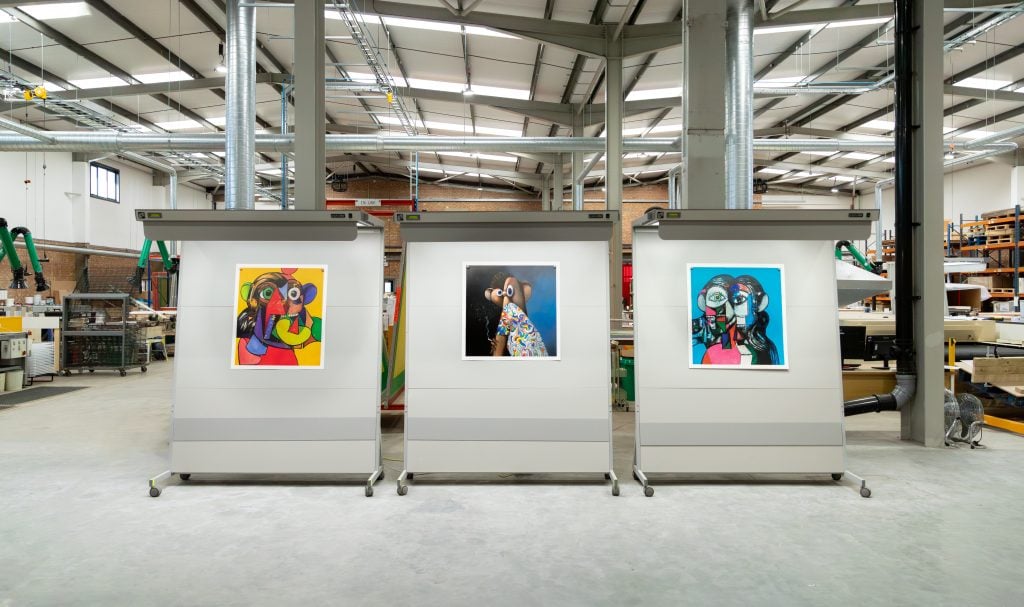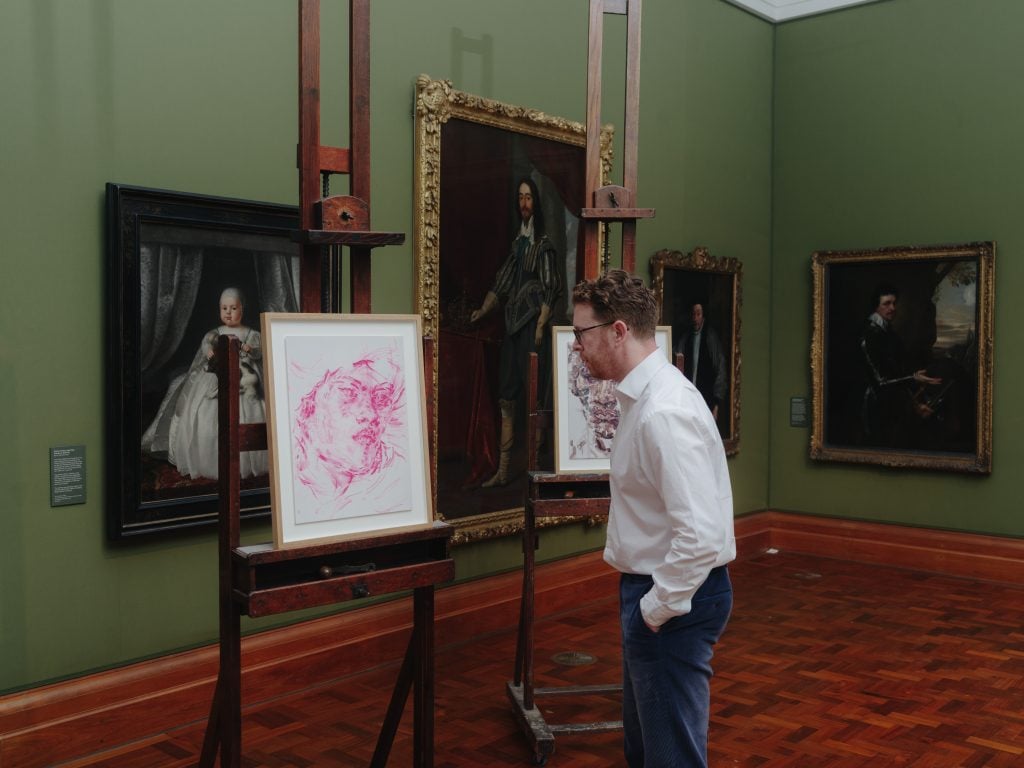Op-Ed
Museums Rely on an Aging Group of Major Donors. That Needs to Change
A new generation of collectors is eager to support the arts, says Mazdak Sanii, founder of Avant Arte.

We wring our hands at the funding crisis faced by museums today. But a new generation of patrons—overlooked and misunderstood—want to help. They won’t wait around forever to be taken up on the offer.
A significant amount of my work involves speaking with museum leaders around their vision and priorities but also about the pressures their institutions face. And it will come as no surprise that, irrespective of the size, heritage, or geography of the museum, the pressures they describe are structurally incredibly consistent. Chief among them— by some distance—is funding. While deaccessioning policies and the shocking recent trend of museums being forced to permanently close their doors are the poster children of such pressures, it is no melodrama to say that the cultural funding crisis is a daily preoccupation for museums around the world.
There are of course different flavors to this issue. In Europe, fiscal constraints and government investment priorities have seen central funding for the arts meaningfully reduced in real terms, sending important institutions scrambling to balance budgets and urgently diversify their sources of income. For museums in territories like the U.S. where government support for the arts is structured around tax incentives geared towards individual philanthropy, pressures are more centered on the over-reliance on a small and aging group of major donors who have increasing demands on their attention and generosity.
However, the fundamental challenge is a shared one: within an inflationary context in which costs to simply maintain cultural operations are rising, museums are struggling to grow income at the pace necessary to balance their books in a sustainable way. And if the world’s greatest cultural leaders, managing our most handsomely-endowed museums, are telling us that they are consistently losing sleep over budgets, society appears to have glitched in a fairly critical way.
There is no shortage of complexity to growing existing income streams, such as revenue from exhibition tickets. Attracting guaranteed volumes of visitors to drive growth can lead towards exclusively blockbuster programming that endangers representation and vital support for artistic risk-taking. Raising ticket prices, on the other hand, nibbles at the tail of a museum’s role to ensure public access to art by excluding those who cannot afford to pay.

George Condo silkscreen prints being made at Avant Arte printmakers Make-Ready, 2024. Courtesy of Avant Arte © Lucy Emms
In June, Avant Arte completed a project to raise $2.5 million for Dia Art Foundation as part of their 50th anniversary, through a series of print editions with George Condo for our collector community, the majority of whom are under the age of 40. George had in fact already generously donated the proceeds from the sale of one of his works to fund free admission in perpetuity at Dia’s Chelsea exhibition space. Yet being able to avoid conflict between income necessities and cultural accessibility for visitors like this is an extreme outlier. And, beyond growing existing income streams, it is no simple task to ladder up new initiatives or reimagine museum models while the plane is very much in flight and resources to keep it airborne are stretched.
The new generation might not seem obvious candidates to help. In cultural commentary today, the record perpetually sticks on how younger people lack the means to support the arts financially, how little they care for traditional arts institutions which fail to incorporate words like “immersive” in their names, and how frazzled they are by the postmodern attention economy that making it through a full episode of Love Island has become cultural engagement to write home about.
I know this lazy typecasting of younger arts audiences to be inaccurate, from more than a decade of building online communities in both music and art; an extensive study undertaken recently by Avant Arte proved the scale of opportunity they represent for museums in particular, in opposition to such dogmas. We analyzed data covering over 3.3 million collectors and enthusiasts in the Avant Arte community, surveyed 1,500 new generation collectors, and conducted detailed qualitative interviews—some of the findings were startling. With half of those surveyed starting collections within the last five years and 40 percent spending upwards of €10,000 ($10,794) per year on art, there is impressive new energy entering a market that is often characterized alongside classical music and theatre as stagnating while its core audience ages.
We also found that 61 percent of our community of young enthusiasts go to a museum or gallery at least once a month, with 74 percent defining these “traditional” spaces as one of their main sources of inspiration. But the insights I found staggering were that four in 10 of our community told us they were keen to do more to support museums financially and, of them, 75 percent were unsure of how they could. The scale of appetite to support financially was as surprising as it is encouraging but the lack of clarity on the mode by which they could do so blew me away. It also serves to demonstrate the urgency with which we need to more widely understand and engage young audiences.

Director Nicholas Cullinan views an Avant Arte edition by Elizabeth Peyton at the National Portrait Gallery in London. Courtesy of Avant Arte © Lucy Emm
With funding pressures as ubiquitous and pronounced as museums face today, it is clear that the new generation can be no panacea: they will need to be one part of a sum of all efforts around both existing and newer income streams that will take patience and persistence. At the same time, with the right access points, dialogue and stewardship, the value of this new generation extends far beyond income generated from the fundraising editions they are buying from us today in their tens of thousands to support leading museums around the world.
I know how swiftly entry-level support from new audiences can grow into transformative philanthropy because I have seen it first-hand. I am fortunate enough to be a trustee of the National Youth Orchestra (NYO) of Great Britain, an ensemble I played the French horn in as a teenager and an organization I’ve watched grow a new program of individual giving from zero to 24 percent of their operating budget in only a few years. This result surpassed all of our expectations and is testament to the bold vision of the NYO’s chief executive, Sarah Alexander. But what feels more inspiring still when thinking of the parallels to engaging new arts audiences with accessible entry points for philanthropy is that multiple seven-figure major gifts have now been donated by people who first engaged with the orchestra by giving as little as £10.
I believe we have a similarly transformative opportunity with the new generation of arts patrons, who might initially start supporting a museum in accessible ways—buying an artist’s edition or visiting an exhibition discovered through social media—and some of whom can be developed into members and the most impactful major donors over time.
Indeed, we know from building our community over the past nine years that as collectors engage and develop, the frequency with which they buy works increases on average fourfold. This development is never passive and requires both consistent effort and thoughtful care, starting with actively listening to what motivates them. In a moment of unprecedented funding pressure for museums, this new generation are telling us that they are motivated to help: we should pause wringing our hands in response to how dire things are, pay attention, and actively take them up on the offer.
Mazdak Sanii is the CEO and co-founder of Avant Arte, a curated marketplace that makes discovering and owning art radically more accessible for a new generation by collaborating with leading contemporary artists to create limited edition works at accessible price points. Avant Arte collaborates with leading public art institutions—including LACMA, Dia Art Foundation, National Portrait Gallery, and Contemporary Arts Society—connecting them with an online community of more than 3 million young enthusiasts and collectors, with the aim of raising millions of dollars and creating thousands of new patrons to support the fundamental work they do in providing public access to art.





